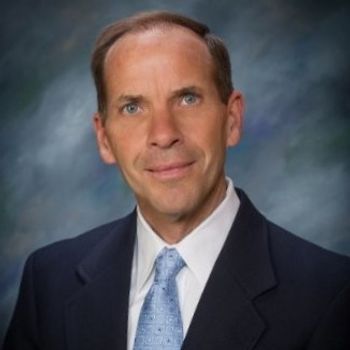
How practice costs wash away income
C99ExpHow practice costs wash away income
How practice costs wash away income
Do primary care physicians spend more on payroll than surgeons?Will managed care participation increase your overhead? Who pays most formalpractice insurance? Here's where to find out.
By Deborah A. Grandinetti, Senior Associate Editor
Practice expenses consumed well over one-third of gross receipts formost physicians last year, according to the Medical Economics ContinuingSurvey, which samples MDs and DOs in office-based private practice. Theexceptions among the fields we analyzed: anesthesiologists, cardiothoracicsurgeons, and psychiatrists. The median expense ratio for all fields ofpractice combined was 36.6 percent.
But primary care physicians surpassed that median, spending 40.2 percentof their gross. Among primary care doctors, ob/gyns were the biggest spenders,laying out $140,470 in actual dollars, or 44.1 percent of gross receipts.
Many individual surgical specialties are also costly to practice. Inthe 15 fields we analyzed, no one outspent plastic surgeons, whose medianexpense ratio was a whopping 48.8 percent last year. Their dollar outlay,$223,770, also topped the charts. Close behind in dollars spent were orthopedicsurgeons, who shelled out $211,410, or 44.6 percent of revenue. At the lowend were anesthesiologists, who spent a mere $28,390, or 14.4 percent ofgross income.
Among all specialties we surveyed, payroll costs were the biggest expenseby far. Doctors across all fields spent 17 percent of gross income on thisone category alone. But physicians who worked in groups of 25 to 49 doctorswere able to achieve economies of scale. Their payroll costs accounted foronly 9.1 percent of gross revenue.
Orthopedic surgeons laid out the most for payroll in actual dollars*$100,000--butoffice staff cost FPs the biggest percentage of gross, 21.4 percent (asopposed to 18.4 for orthopedic surgeons). Anesthesiologists and psychiatristsspent the least on payroll in terms of both dollars and percentage of gross.
Regionally, payroll costs were highest in the Mid-South, where physicianstypically shelled out $70,000, or 17.8 percent of gross receipts. But theircolleagues in the Great Lakes region and the Far West had even higher expenseratios: 18.1 and 18.0 percent, respectively.
Office rent and mortgage payments ranked second behind payroll as a majoroutlay for 10 of the 15 specialties we analyzed. The median for this expensewas 5.8 percent of gross income*or $19,100 in actual dollars*for all fieldscombined. Predictably, plastic surgeons spent a chart-topping $34,360 forsurroundings swank enough to impress their cosmetic surgery clients. Butinternists spent an even greater proportion of gross revenue*7.2 percentas opposed to 6.9 percent for plastic surgeons. For doctors in all fieldscombined, regional outlays ranged from a high of $21,380 in the Far Westto a low of $14,310 in New England.
Malpractice premiums cost less than office space for all specialistsexcept cardiothoracic surgeons, general surgeons, neurosurgeons, and ob/gyns.Cardiothoracic surgeons, for example, spent $30,220 for malpractice insurance,compared with $18,350 for office space. But ob/gyns had the largest malpracticeexpense ratio (8.3 percent), followed by cardiothoracic surgeons and neurosurgeons(both 6.7 percent), and general surgeons (6.3 percent). Regionally, malpracticepremiums were highest in Mid-Eastern states, where they consumed 3.9 percentof gross income and cost $12,100 for all doctors combined. The median acrossall fields was 3.2 percent, or $9,930 in actual dollars.
Some other findings from our survey: Outlays for business supplies andcontinuing education were roughly the same across all fields of practice,at $5,070 and $2,240, respectively. Our survey also showed that managedcare participation tends to increase overhead. Doctors who participate inat least one PPO spent 37.8 percent of their gross, compared with only 33.9percent for PPO nonparticipants. Doctors who contract with at least oneHMO spent 37.8 percent of their gross, vs 35.9 percent for HMO holdouts.
How did you fare last year compared with similarly situated physicians?The following charts and tables will help put your expenses in perspective.Our survey methodology is detailed in the Sept. 20, 1999, issue , also availableat
Which doctors spent the mostand least
Dollar and percentage figures are medians representing the tax-deductibleprofessional outlays during 1998 by individual MDs and DOs in full-timeoffice-based practice. They do not include responses that reported no professionalexpenses. The figures don't include tax-deferred retirement plan contributionsmade on a doctor's own behalf. All data in these charts are from the MedicalEconomics Continuing Survey, 1999.
As group size goes up, individual expenses go down
Outlays for three major items
1 Includes salaries, bonuses, and retirement plan contributions,if any, for nonphysician employees only.
2 Rent or mortgage payments. Figures are medians for all fieldsof practice combined.
Ranges of physicians' 1998 professional costs
*Less than 1 percent. Because of rounding, percentages may not total100.
Spending totals around the country
Figures are medians for all fields of practice combined.
How spending on three big-ticket items varies by region
1 Includes salaries, bonuses, and retirement-plan contributions, if any,for nonphysician employees only.
2 Rent or mortgage payments. Figures are medians for all fields of practicecombined.
Spending on selected items, by specialty
1Includes salaries, bonuses, and retirement plan contributions, if any,for nonphysician employees only. 2Rent or mortgage payments. 3Includes nondepreciablesmall instruments. 4Includes registration fees, costs of materials and travel,meals, and lodging for doctor only. 5Less than 1 percent. 6Insufficientsample. Percentage of gross doesn't decline in the same order as the correspondingmedian expense in dollars, because the pool of doctors reporting each expensediffers. Figures are medians and are based only on survey responses reportingan expenditure for the individual item in 1998. Although they're includedin the totals, some items (dues, subscriptions, etc.) aren't listed separately.
>
Figures are medians for all fields of practice combined.
Figures are medians for all fields of practice combined.
This article is It may not be reproduced, quoted, or paraphrasedin whole or in part in any manner whatsoever without the prior written permissionof the copyright owner.
Carol Pincus, ed. . How practice costs wash away income. Medical Economics Oct. 25, 1999;76:60.
Newsletter
Stay informed and empowered with Medical Economics enewsletter, delivering expert insights, financial strategies, practice management tips and technology trends — tailored for today’s physicians.
















